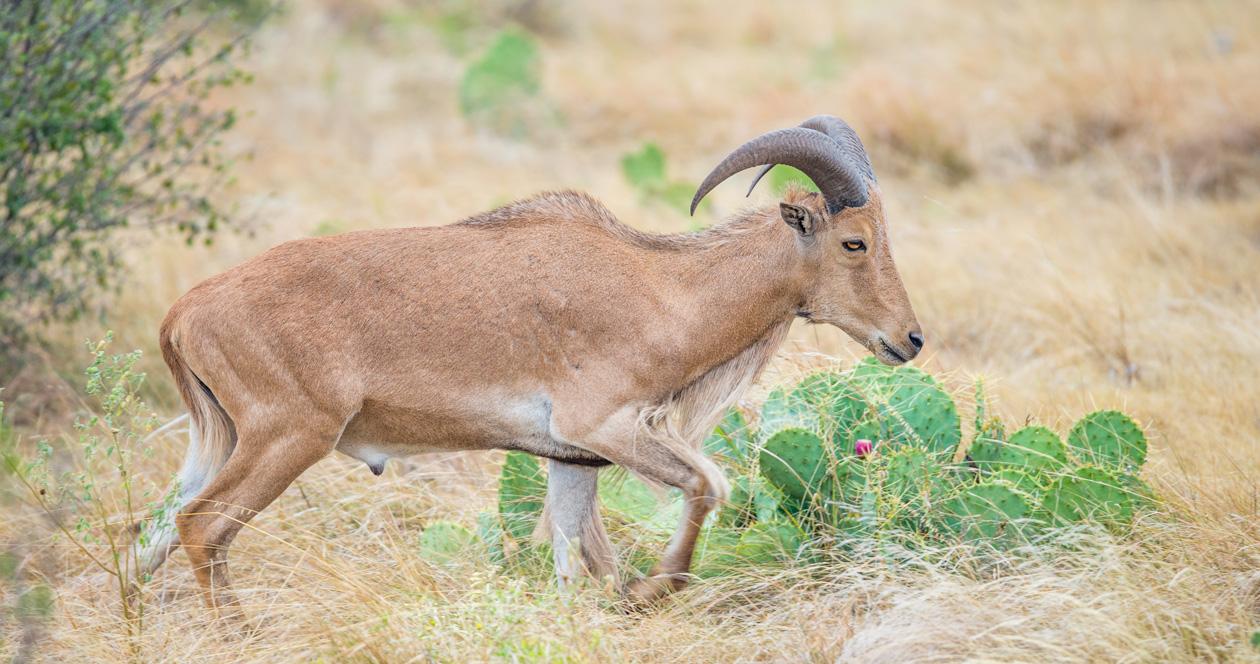




There are potentially too many Barbary sheep in Texas and they’re affecting native desert bighorn populations in the western portion of the state. For the past several years, Texas researchers have been studying them and “their impact on native wildlife,” according to the Texas Farm Bureau.
Barbary sheep were originally imported from Northern Africa to Texas in the 1950s as a way to add more hunting opportunities. However, In 2018, researchers discovered that Barbary sheep, which have “thrived in the desert landscape of West Texas” for decades, are potential carriers of mycoplasma ovipneumonia, an often-fatal form of bacterial pneumonia that has caused die-offs in bighorn sheep herds across the West.
“Of all the [Barbary sheep] that we saw that tested positive for that bacteria, none of them showed signs of being sick,” said Froylan Hernandez, TPWD desert bighorn sheep program leader. “There was no nasal discharge. There was no coughing. The animals appeared in good health.”
But with the discovery, TPWD wanted to learn more about how it could infiltrate wild desert bighorn herds and partnered with the Texas A&M School of Veterinary Medicine to study just that. In several controlled experiments, Barbary sheep were inoculated with the virus and showed signs of sickness; however, researchers acknowledged that the stress of moving them to a different location could have triggered outward signs of the virus.
Another experiment involved bringing wild desert bighorn sheep into a controlled environment and then introducing infected Barbary sheep. Both cohorts shared a water source. The bacterial pneumonia was transferred through that shared source.
“In both cases, it appears that yes, aoudad can transmit that bacteria and infect bighorns through a shared water source without direct contact,” said Hernandez.
The study also found that the bacteria can be directly transmitted from the Barbary sheep to bighorn sheep if they are in the same pen or area, according to the Texas Farm Bureau.
“There are several disclaimers with that. It was a controlled setting. It was forced contact. How often do aoudad actually come into direct contact with bighorns?” said Hernandez. “So, there are things that still need to be looked at, but that prompted us to take it a step further and to look into a wild setting.”
Regardless, knowing the prevalence of the disease within the Barbary sheep has led to suggesting ways to manage the spread of the disease as well as the overall Barbary sheep population. TPWD, BRI and other partners are considering aerial gunning as one way. Once the animals are removed from the landscape, researchers will test them for the disease. Another option under consideration is to test shared water sources for the disease.
“If you have a hundred aoudad on the landscape and all hundred are infected with the bacteria, then through aerial gunning, you reduce the number of infected [Barbary sheep] on the landscape until you essentially lower the prevalence of the bacteria out there,” said Hernandez.